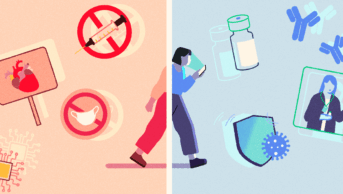
Ikon Images / Alamy Stock Photo
Research conducted by Maria Naylor, Master of Pharmacy student from the University of Birmingham, has found that only 36% of the most senior positions in pharmacy are held by women. This is despite 60% of the 55,209 pharmacists currently registered with the General Pharmaceutical Council (GPhC) being women.
These findings are broadly in line with national figures from Cranfield University, which reported less than 30% of board representatives from UK FTSE 100 companies in 2017 were female.
The Office of National Statistics has also highlighted that earnings for full-time employees from 2017 were entirely in favour of men; and within the NHS, only 37% of senior positions are held by women, who represent more than three-quarters of all staff members.
Hannah Batchelor, director of pharmacy research at the University of Birmingham, says awareness of the current balance of gender at all levels within an organisation is needed, to “ensure that measures are taken to support a diverse workforce”.
Legislative change in the UK has resulted in compulsory reporting of pay for male and female employees of larger corporations and has seen the gender pay gap narrow to 9.1% in April 2017, the lowest it has been since 1997. However, it is clear that more progress needs to be made to address inequality across the sexes, both within pharmacy and wider society.
Understanding gender inequality
Gender is the role that society assigns to a person based on their sex — their biological and physiological traits. Gender inequality is influenced by gender bias, which is defined as the inclination towards or prejudice against one gender; and gender discrimination, bias based on an individual’s sex.
Disparity or inequality associated with gender is influenced by the belief that men and women are not equal, encouraging gender stereotypes where certain roles are thought to be best fulfilled by either males or females because of their sex.
Despite being outdated, these ideas still have a significant influence on the career progression of individuals today.
Career progression within pharmacy
Naylor’s study, which is co-supervised by Batchelor and Sarah Pontefract at the University of Birmingham, is mapping the gender balance in the progression opportunities for pharmacists, and determining if the proportion of females in senior positions reflects the gender distribution on the GPhC register.
Seniority was split into three levels, with Level 1 roles being the most senior. These positions included heads of schools, professors, chief pharmacists, band 8a–8d pharmacists, directors, superintendent pharmacists and board representatives.
At present, 66.2% of 387 respondents are female, with little difference in the proportion of men and women holding comparable senior positions, or the time taken to reach these positions. However, there was an under-representation of females on pharmacy committee boards or females who had completed additional leadership training (46.5% vs 60.3%), with a greater proportion of women working part time (23% vs 7.6% of men).
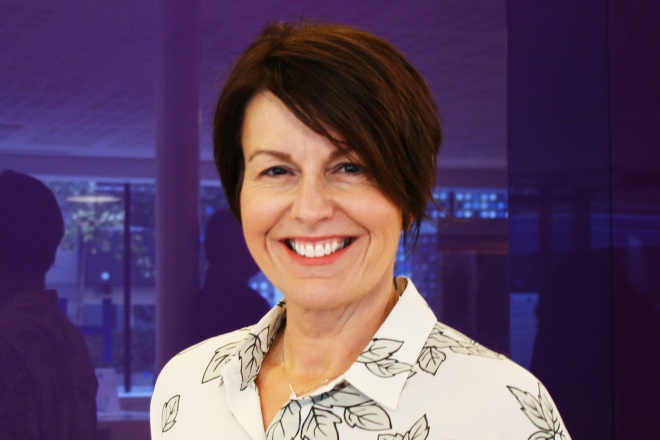
Source: MAG / The Pharmaceutical Journal
Deborah Evans says the female presence within pharmacy at senior level is poor
Deborah Evans, pharmacist and managing director of Pharmacy Complete, a consultancy providing support and training for the pharmacy industry, says as with many professions, “the female presence within pharmacy at senior level is poor”. She has observed the lack of women on the National Pharmacy Association (NPA) board of management and the Pharmaceutical Services Negotiating Committee (PSNC) regional representatives, but she also notes 5 out of 11 Company Chemists’ Association (CCA) representatives on the PSNC are female.
In response, the PSNC has stated that “the regional representatives are elected locally to represent all independent contractors in their region and, as such, they are likely to reflect the current ownership of community pharmacies. The Chief Officers of LPCs, with whom the PSNC works closely, are more representative of the gender split within the overall population, with 32 females and 39 males at present”. At the time of publication, The Pharmaceutical Journal was awaiting comment from the NPA.
Within the Royal Pharmaceutical Society (RPS) Executive Team, which oversees the operational management of the society, three of the eight members are female. The English Pharmacy Board consists of 14 members, 7 of whom are female; and both the Scottish and Welsh boards have 11 board members, with 5 and 4 female members, respectively. Helen Gordon led the society as CEO for seven years, from the formation of the current RPS in 2010 until mid-2017, and there has also been a time when all three of the chairs to the national boards were women.
Paul Bennett, current chief executive officer for the RPS, addresses gender diversity as an issue the society takes seriously. Bennett is motivated to move the RPS towards a position of gender parity on the RPS assembly and boards, as well as within his own executive team — admitting more can be done. Bennett says the profession as a whole has a high proportion of females, and as RPS governing structures draw from its membership, arguably this should better reflect the mix of membership as a whole. Bennett encourages women to step forward during the next RPS elections and not to feel at all reticent about getting involved, stating: “Two of the three RPS board chairs are currently women, there have been many great female presidents of the society, and I’m sure there are more to come.”
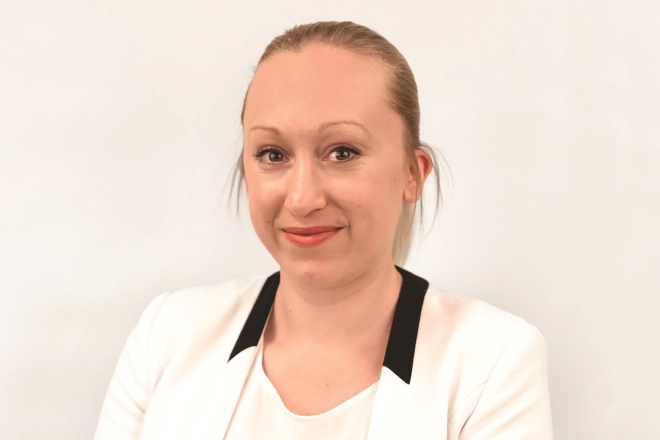
Source: Courtesy of Laura Reed
Laura Reed encourages women to speak out about their desire to progress
Laura Reed, head of professional development at Numark Pharmacy, says although we are seeing some women reaching high positions within the profession, this must expand to be truly representative. “The key is to ensure women are appointed to senior positions based on merit and not to fill some equality tick box.”
Knowing your value
In terms of pay, Mara Gilchrist, education development officer for the British Pharmaceutical Students Association (BPSA), states a 2017 survey of 1,374 pharmacy students, titled ‘Aspirations and expectations of pharmacy students’
, found 43.7% of male students expected to eventually earn more than £60,000 per year as a pharmacist, compared with 26.2% of female students.
Results from the 2017 Pharmaceutical Journal salary survey identified that out of 1,126 non-locum pharmacists (785 female and 341 male), 19.9% of male respondents earned £60,000 or more per year compared with only 6.8% of female respondents.
Gilchrist believes this might point towards “women undervaluing themselves” in comparison with male colleagues.
Lack of confidence
Self-doubt and a lack of confidence may be contributing factors to females’ difficulty in career progression. Evans says research indicates that women will wait until they feel they can do a job well before putting themselves forward for a new role, whereas men will take greater risks in stepping up.
Clare Howard, pharmacist and clinical lead for the Wessex Medicines Optimisation Programme and previous chair of the Medicines Optimisation Clinical Reference Group and the Controlled Drugs working group, says female colleagues are sometimes “hesitant” to apply for roles because of commitments at home, or because they lack the confidence to give it a go.
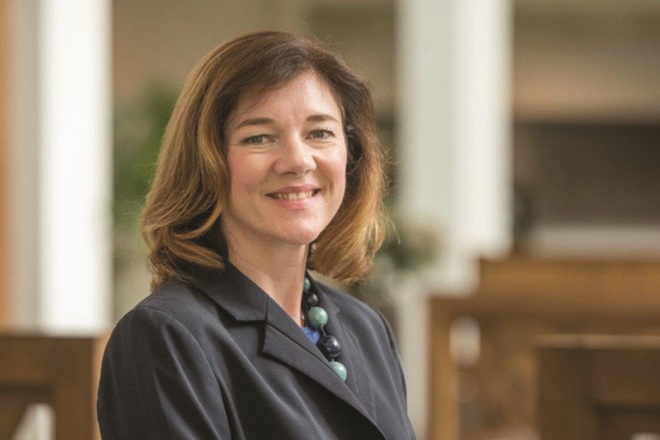
Source: Courtesy of Clare Howard
Clare Howard believes issues such as gender bias will only be addressed if we shine a light on them
Female role models
The low visibility of female role models for young pharmacists to aspire to may be associated with these confidence issues. Claire Thompson, RPS deputy chief scientist, says “you can’t be what you can’t see” — a sentiment echoed by Batchelor, highlighting that only 25% of chief pharmacist roles in 2014 were filled by women.
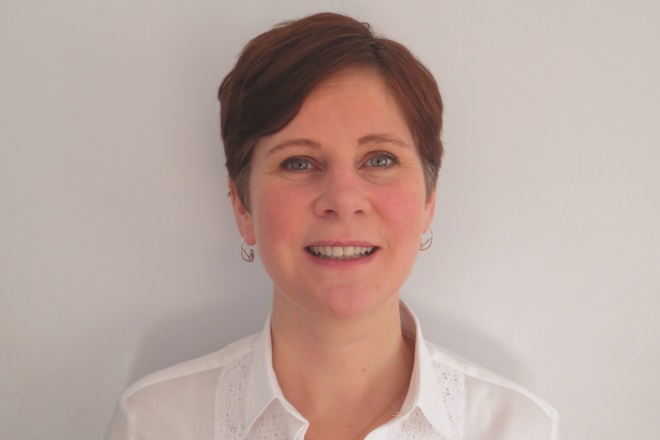
Source: Courtesy, Hanna Batchelor
Hannah Batchelor, director of research for pharmacy at The University of Birmingham, is currently joint supervisor for a study exploring career progression within pharmacy
Evans stresses that “females working in the profession require specific, tailored support to progress”, adding that organisations need to shine a light on how many women hold senior positions. “Employers need to consider how to best support diversity, with more attention to promoting women in leadership roles, and an atmosphere in which everyone has a chance to be a leader,” Evan suggests.
Family matters
Christine Heading, academic pharmacist, associate lecturer with the Open University, and an executive committee member of the National Association of Women Pharmacists, says “there is no reason for pharmacy to believe it is immune from the issues identified in other professions and workplaces”. Heading explains that although NHS England has agreed funding for 1,500 pharmacists to work in GP practices by 2021, the roles are full time with job sharing not permitted, which Heading believes is odd and contrary to the general direction of travel, as demonstrated by other European nations.
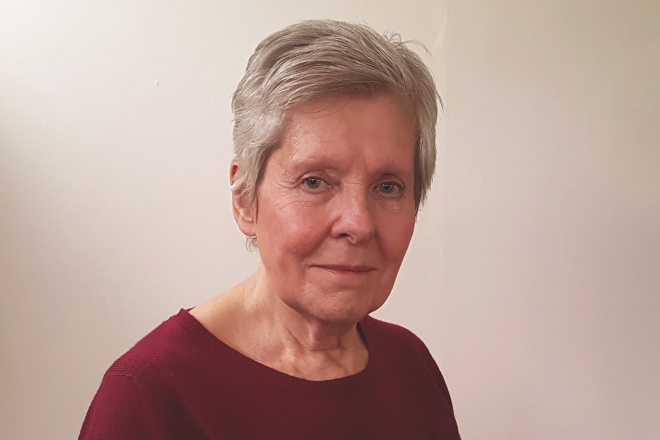
Source: Courtesy, Christine Heading
Christine Heading believes more information on how many women hold senior positions is needed
In 2017, the World Economic Forum ranked Iceland first out of 144 countries for gender equality for the ninth year running — the UK ranked 15th. The Nordic nation has closed more than 87% of its overall gender gap with the aim of eradicating differences in pay within the next five years. Iceland has recently passed an equal pay law making it illegal for employers to pay females less than their male counterparts. In addition, parental leave is granted to both males and females, allowing shared responsibility of running a home. Parents are able to share nine months of leave between them while receiving 80% of their salary. Both parents are entitled to three months of parental leave and the remaining three months is shared how the couple see fit. Leave entitlements are non-transferable between parents to ensure both are able to work and care for the family.
In comparison, UK mothers receive 39 weeks maternity leave and statutory maternity pay (SMP), where 90% of the average weekly earnings (before tax) are paid for the first six weeks and £140.98 or 90% of the average weekly earnings (whichever is lower) is paid for the next 33 weeks. Mothers who are not eligible for SMP may claim for a maternity allowance. Fathers are eligible for paternity pay or paid paternity leave of one to two weeks according to certain criteria. However, parents are entitled to shared parental leave in the UK, where the maximum amount that can be shared or taken is 50 weeks of leave and 37 weeks of pay. The limited allowance for maternity and paternity leave in the UK is a potential barrier for both female and male pharmacists wishing to have a family.
Simon (anon) is a pharmacist with experience in community, hospital and academia with aspirations of becoming a senior academic or professor, mixing teaching with research. However, he does not intend to devote his life to his career and wishes to balance it with family life. Traditional gender views dictate that males are expected to be career men, the breadwinners. As a male, Simon fears he may be unfairly disadvantaged by his desire to be a ‘family man’ and believes, “a rebalance is needed so that men feel comfortable going part-time, allowing [for] both men and women to have a successful career and children”.
Flexibility for development
In terms of professional development, Naylor says leadership training can positively influence career progression for males and females, but such training is often delivered as an extra or out-of-hours course, traditionally more difficult for females to manage alongside caring responsibilities — a factor that may also hinder progression.
Reed suggests women speak out about their desire to progress, or need for extra flexibility. However, Reed is also aware that some women may worry they will be seen as hard or pushy if they adopt a certain attitude and so may hold back, or feel they have to overcompensate and become ‘tough’ or ‘ruthless’ in order to exceed in roles.
The NPA’s chief pharmacist Leyla Hannbeck encourages women not to be afraid to ask “why” if employers are not delivering adequate support. “It is okay to ask for what you need to get to where you want to be,” says Hannbeck. She also encourages women not to pretend to be tough if that is not who they are. “I’m proud of the fact [that] I’m a woman in boardrooms, but I don’t try to behave like the men. Women are different and we shouldn’t feel we need to hide it.”
Unconscious bias vs overt sexism
As a pharmaceutical scientist in industry, Thompson admits she has not experienced any particular barriers to her career, but does recall a sexist comment made years ago during an industry meeting with a new senior executive. Thompson enquired about his background, to which he replied, “I was a gynaecologist, but don’t be asking me for an examination!” Thompson says she was horrified but others in the group — mostly men — were laughing.
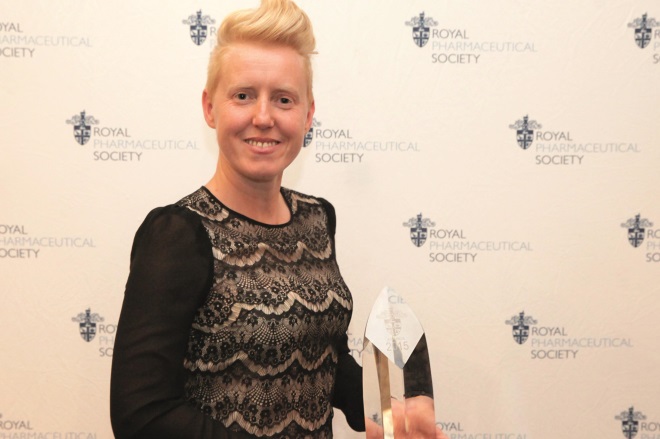
Source: Nadia Attura / Royal Pharmaceutical Society
Claire Thompson believes without female role models, professional development for female pharmacists is potentially hindered
Such cases are not isolated, according to newly qualified pharmacist Melissa O’Conner-Smith, who recalls that as a pre-registration trainee, a regular patient made it clear he was dissatisfied with the advice he had received because all staff members were women and so asked for “the men”. Thorrun Govind, pharmacist at Sykes Chemist, tells a similar tale of customers assuming the male pre-registration trainee she was mentoring was the pharmacist and she was his assistant.
Sexual harassment and unacceptable behaviour
Although sexism in any form is unacceptable, sexual harassment or unwanted sexual behaviour is particularly harmful, with far reaching consequences affecting not only an individual’s career but overall confidence and wellbeing. Research performed by the Trades Union Congress and the Everyday Sexism Project in 2016 found that 52% of 1,553 UK women surveyed had experienced some form of sexual harassment or unwanted sexual behaviour at work. More recently, the ‘#Metoo’ movement, popularised through social media, has significantly increased awareness following allegations of sexual harassment and misconduct by those in positions of authority within the entertainment industry.
Prevalence of this behaviour within the pharmacy profession is unknown; however, individuals who have experienced sexual harassment or any other form of discrimination in the workplace are encouraged to seek advice from organisations such as the Advisory, Conciliation and Arbitration Service and the Equality and Human Rights Commission, who provide free and impartial information and guidance to employees and employer organisations.
Addressing gender inequality
Howard says she personally cannot complain about gender bias when she was appointed to a senior NHS role at 16-weeks pregnant, but adds: “It is the low-level, seemingly small things that can affect your career.” She says it is good that gender inequality issues are being discussed despite them being complex and tricky to talk about. However, she believes such issues will only be addressed if we shine a light on them.
Voice your opinions
The Pharmaceutical Journal will be holding an online Twitter conversation in early April 2018 to further discuss the issues covered in this article. Please send any questions or topics you would like discussed to: angela.kam@rpharms.com or use the hashtag #PJMindTheGap
Join the movement
A new Women in Leadership Working Group hosted by the RPS believes 2018 is the year to address the lack of gender diversity at senior level in the pharmacy profession, building on the work already started in this area by the RPS and the National Association of Women Pharmacists.
While there are some very effective, highly capable and competent women in pharmacy, more of them need to be encouraged and supported to help shape the future and to ensure that the leadership reflects the diversity of workforce.
As part of this initiative, the Facebook group Women in Pharmacy was created to provide an opportunity for women to network, and encourage and support one another through their shared experiences. Members are from all sectors of pharmacy, covering a wide range of roles and seniority, at different stages of their career and from across the UK and the globe.
If you would like to engage with this work please email women@rpharms.co.uk, briefly stating what you think are the key issues for women in pharmacy and what you would like to see from a women’s network.
Research participation
The University of Birmingham School of Pharmacy is interested in additional data for its Gender Diversity in Pharmacy survey. If you are interested in participating, please visit: https://bham.onlinesurveys.ac.uk/gender-diversity-in-pharmacy
- This article was amended on 2 December 2020 to clarify that only 36% of the most senior positions in pharmacy are held by women.

